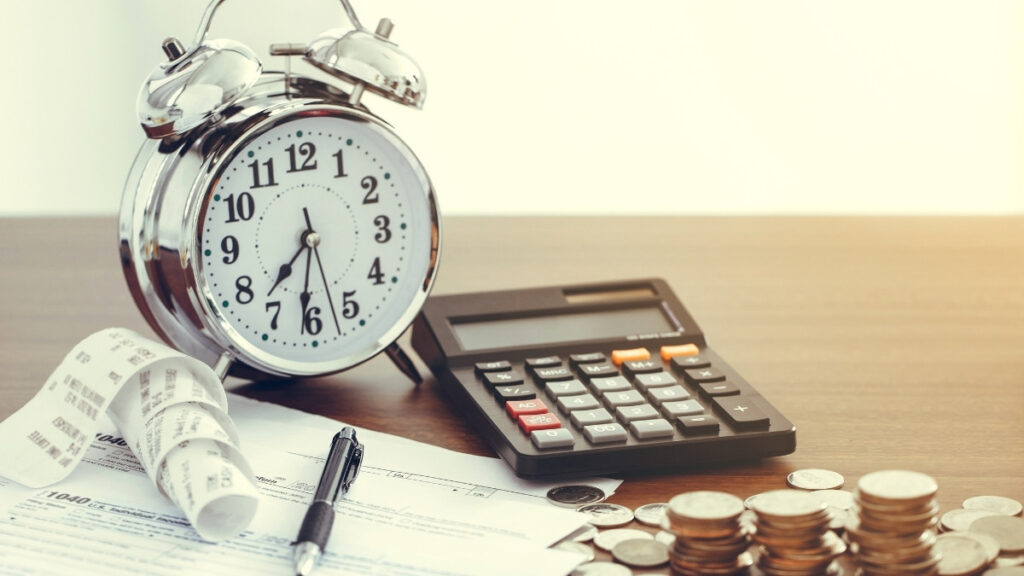
Here’s something most retirees don’t know: The average American retiree lives on about $5,000 per month. But they actually need between $7,500 and $8,500 to live the same way they did before retiring. That’s a $2,500 to $3,500 gap every single month.
You’ve saved for decades. You did everything right. But now you face a scary question: How do you turn your savings into monthly income without running out of money?
The answer isn’t simple. Pull out too much, and you might run out in 15 years. Pull out too little, and you’ll live like you’re broke when you’re actually rich.
Here’s what makes it worse: That old “4% rule” everyone talks about? It doesn’t work anymore in 2025’s market conditions.
Why 2025 Is Different for Retirees
Let’s start with the bad news. Financial experts at Morningstar now recommend pulling out just 3.7% of your savings in your first year of retirement. Not 4%. Not 5%. Just 3.7%.

Why so low? Two reasons. Interest rates are unpredictable, and market swings can destroy your plans faster than ever before.
Here’s what you need to make retirement work:
Social Security covers some of it. The average payment in 2025 is $1,976 per month. That helps, but it’s not enough.
You need 70-85% of what you earned before retiring. Made $100,000 while working? Plan on needing $70,000 to $85,000 per year in retirement.
Most retirees fall into the middle. Single people get about $47,000 per year (that’s $3,900 per month). Married couples average $100,000 per year ($8,300 per month).
The Danger Zone: Your First Five Years

Your first five years of retirement are make-or-break. This is when sequence of returns risk hits hardest.
What’s that? It’s when the market crashes right after you retire.
Here’s the scary part: A 15% drop in your portfolio during year one can make you six times more likely to run out of money completely.
Same portfolio. Same withdrawal rate. Different timing. Completely different outcome.
This is why you need a system.
The Bucket Strategy: Turn Your Savings Into a Paycheck Machine

Back in 1985, a financial planner named Harold Evensky created something brilliant. He called it the bucket strategy.
The idea is simple. You split your retirement money into three separate buckets. Each bucket has one job. Each bucket uses different investments.
Let me show you how it works.
Bucket 1: Your Cash Safety Net (Years 1-2)
Put 1-2 years of living expenses here. This is your emergency stash.
What goes in it: High-yield savings accounts, money market funds, short-term Treasury bills.
Why it matters: When the stock market crashes, you don’t panic. You just use this bucket and wait for stocks to recover.
Real numbers: Need $50,000 per year to live? Keep $50,000 to $100,000 in this bucket.
This bucket is boring. It earns almost nothing. And that’s exactly the point.
Bucket 2: Your Medium-Term Growth (Years 3-10)
This bucket covers years 3 through 10. It grows enough to beat inflation but doesn’t take huge risks.
What goes in it: Investment-grade bonds, CDs, dividend-paying stocks, REITs.
The goal: Make 3-5% returns without losing sleep.
Real numbers: For moderate spending needs, keep $300,000 to $400,000 here.
Think of this as your bridge. It connects your safe money to your growth money.
Bucket 3: Your Long-Term Growth Engine (Year 10+)
Everything else goes here. This money won’t be touched for at least 10 years.
What goes in it: Index funds, growth stocks, international stocks.
The magic: When the market crashes, you don’t care. You won’t need this money for a decade. It has time to recover.
This bucket “refills” the other two buckets when times are good.
See It In Action: $1 Million Portfolio
Let’s say you have $1 million saved and need $50,000 per year to live:
- Bucket 1: $100,000 (your 2-year cushion)
- Bucket 2: $300,000 (years 3-10)
- Bucket 3: $600,000 (long-term growth)
When Bucket 1 gets low, you refill it from Bucket 2. When Bucket 2 gets low, you refill it from Bucket 3 during good market years.
The market crashes? No problem. You’ve got 2+ years of cash sitting there waiting.
How to Set Up Your Monthly Retirement Paycheck

You’re about to stop getting a paycheck from work. But you can create your own paycheck from your savings.
Here’s exactly how to do it.
Step 1: Calculate What You Actually Need
Grab a piece of paper. List every expense:
- Housing (mortgage, rent, insurance, taxes)
- Food and groceries
- Healthcare and prescriptions
- Car payments and gas
- Phone, internet, utilities
- Entertainment and travel
- Everything else
Add it all up. Let’s say you get $4,500 per month.
Now subtract your guaranteed income:
- Social Security: $2,000
- Pension (if you have one): $0
You need $2,500 per month from your portfolio. That’s $30,000 per year.
But wait. You have to pay taxes on most of this money.
Step 2: Add Taxes to Your Math
Most retirement account withdrawals get taxed as regular income. Let’s say your effective tax rate is 14%.
Your math now looks like this:
- Need: $30,000 per year
- Taxes at 14%: $4,200
- Total you must withdraw: $34,200 per year
That’s $2,850 per month.
Pro tip: Have taxes withheld automatically. It’s better to get a small refund than owe money in April.
Step 3: Pick Your Payment Schedule
Most people choose monthly payments. It feels like getting a regular paycheck.
But you can also do:
- Bi-weekly (if you’re used to that from work)
- Semi-monthly (twice a month)
- Quarterly (if your expenses are low)
Pick what matches your budgeting style.
Step 4: Automate Everything
Call your brokerage or financial institution. Set up systematic withdrawals. They’ll:
- Pull money from your accounts automatically
- Deposit it directly to your checking account
- Withhold taxes for you
- Send you tax forms at year-end
Once a year, increase your withdrawal by 2-3% to keep up with inflation.
Real Example: Your New Paycheck
You’re 65. You need $45,000 per year before taxes:
- Monthly payment before taxes: $3,750
- Tax withholding (14%): $525
- What hits your bank account: $3,225
Every month, like clockwork, $3,225 appears in your checking account. Your taxes are already paid. You budget with this amount just like when you were working.
How to Protect Yourself When Markets Crash

Here’s a question that keeps retirees up at night: What happens if the market crashes right after I retire?
The answer: It depends on whether you’re protected or not.
Why Timing Matters So Much
Imagine two people. Both retire with $1 million. Both use the same withdrawal strategy. Both live 30 years.
Person A retires in 2000, just before the dot-com crash. Their portfolio gets hammered early. They run out of money before they die.
Person B retires in 2003, after the market recovers. Their portfolio lasts 30+ years with money left over.
Same amount. Same strategy. Different timing. Totally different lives.
This is sequence of returns risk. And you must protect yourself from it.
Protection Strategy 1: The Cash Cushion
Keep 3-5 years of living expenses in cash or near-cash investments.
When stocks drop 30%, you don’t sell anything. You live off your cash cushion and wait for the recovery.
Your stock portfolio gets time to heal. You never lock in losses by selling low.
This simple move can be the difference between running out of money and dying with money left over.
Protection Strategy 2: The Right Mix of Stocks and Bonds
A balanced portfolio of 60% stocks and 40% bonds dramatically reduces your risk compared to having more stocks.
Why? When stocks crash, bonds usually stay steady or even go up. Your bonds cushion the fall.
Fixed income investments give you something stable to sell when you need money. You never have to sell stocks at the worst possible time.
Protection Strategy 3: Flexible Spending
This one is simple but powerful. Spend less when markets are down. Spend a bit more when markets are up.
Studies show this flexibility can increase your safe withdrawal rate from 3.7% to 4.0%. That might not sound like much, but on a $1 million portfolio, it’s an extra $3,000 per year.
Down market year? Skip the expensive vacation. Cut back on eating out.
Up market year? Take that trip you’ve been dreaming about.
The key is having expenses you can adjust. Keep your fixed costs low so you have room to flex.
Smart Ways to Reduce Your Tax Bill in Retirement

Most retirees pay too much in taxes. They just don’t know any better.
Let me show you how to keep more of your money.
Know Your Three Types of Accounts
Traditional IRA/401(k): You pay regular income tax when you take money out. This is usually your highest tax rate.
Roth IRA: You already paid taxes on this money. Now it grows tax-free, and you take it out tax-free. This is your most valuable money.
Regular taxable accounts: You pay capital gains tax, which is often much lower than income tax. For many retirees, this rate is actually 0%.
The Big Tax Secret Most People Miss
If you’re single and your taxable income is under $48,350 in 2025, you pay zero percent capital gains tax.
Read that again. Zero percent.
This means you should pull money from regular taxable accounts first if you qualify. Use up that 0% capital gains bracket before touching your IRA.
The Smart Withdrawal Order
Most experts recommend the “proportional method.” Here’s how it works:
Spread your traditional IRA withdrawals over your entire retirement. Don’t wait until you’re forced to take out huge chunks at age 73.
Why? You stay in lower tax brackets every year instead of getting pushed into high brackets later.
This one strategy can reduce your lifetime tax bill by 40% or more.
The Roth Conversion Trick
Let’s say you retire at 65. You don’t start Social Security until 67. Those two years, your income is super low.
This is the perfect time to convert some traditional IRA money to a Roth IRA.
You’ll pay taxes on the conversion. But since your income is low, you pay taxes at a low rate. Then that money grows and comes out tax-free forever.
Example: Convert $30,000 from traditional IRA to Roth when you’re in the 12% tax bracket. Pay $3,600 in taxes now. Save thousands later when you’re in higher brackets.
Planning for Required Withdrawals
At age 73, the government forces you to start taking money out of traditional IRAs. These are called Required Minimum Distributions (RMDs).
RMDs can push you into higher tax brackets. They can make more of your Social Security taxable. They can even increase your Medicare premiums.
Smart planning before age 73 can reduce these problems:
- Do Roth conversions in your 60s and early 70s
- Use up your traditional IRA money strategically
- Time your Social Security claiming to minimize taxes
Year-by-Year Tax Strategy
Ages 65-70: Pull from taxable accounts and Roth to stay in the 0% capital gains bracket. Your tax bill is almost nothing.
Ages 70-73: Do Roth conversions before RMDs kick in. Pay taxes at low rates now to save later.
Age 73+: Take your required RMDs. Fill in any gaps with Roth withdrawals to stay in low brackets.
Build a Portfolio That Pays You Every Month

Some people don’t want to sell stocks to create income. They want their investments to pay them directly.
This is called dividend investing. And it can work really well in retirement.
The Dividend Approach
Quality companies pay shareholders a portion of their profits. These payments are called dividends.
A portfolio yielding 3.5% to 4.5% from dividends can provide sustainable retirement income. You never have to sell anything during market crashes.
Let’s say you have $600,000 invested. At 3.5% dividend yield, you get $21,000 per year in cash payments. Add $24,000 from systematic withdrawals of some holdings, and you’ve got $45,000 total.
What Makes a Good Dividend Stock
Don’t just chase the highest yields. That’s a trap. Look for quality instead:
Long payment history: Companies that have paid dividends for 10+ years are reliable.
Growing dividends: The best companies increase their dividends by 3-5% every year. This helps you keep up with inflation.
Strong cash flow: Make sure the company actually makes enough money to keep paying you.
Diversification: Spread across different sectors so you’re not dependent on one industry.
Easy Ways to Get Dividend Income
Individual stocks: You can buy blue-chip companies, REITs (real estate), and utilities directly. This gives you control but requires research.
Dividend ETFs: Funds like DIVO and SPHD pay 4-5% yields with instant diversification. They hold dozens of companies, so you’re not dependent on any single stock. Management fees are low.
These ETFs often pay monthly, which makes budgeting easier.
The Hybrid Approach (Recommended by Experts)
Morningstar recommends mixing dividend income with total return strategy.
Use your dividend and interest income for part of your spending needs. Then supplement by selling small amounts of your appreciated holdings.
This gives you:
- Steady income from dividends
- Flexibility to adjust as needed
- Protection against any single approach failing
Example portfolio producing $45,000 per year:
- Dividend income: $21,000
- Selling appreciated holdings: $24,000
- Total: $45,000
You’re not dependent on dividends alone. You’re not dependent on selling alone. You have options.
Your Annual Retirement Checkup

Set up your retirement income once, and you’re not done. You need to check in every year.
Think of it like a health checkup for your money.
Refill Your Cash Bucket
Check Bucket 1 every three months.
When the market has a good year, take some profits from Bucket 3. Move them to Bucket 1 to keep it topped off at 1-2 years of expenses.
Never let Bucket 1 run empty. That defeats the whole purpose.
Rebalance Your Portfolio
Stocks and bonds drift over time. Let’s say you want 60% stocks and 40% bonds.
After a great stock market year, you might now have 70% stocks and 30% bonds. Your portfolio is riskier than you planned.
Rebalance by selling some stocks and buying some bonds. This forces you to “sell high and buy low” automatically.
Do this at least once per year.
Adjust for Inflation
Increase your monthly withdrawal by 2-3% each year to keep up with rising costs.
But here’s a secret: Many retirees actually spend less as they age. Your 75-year-old self might not travel as much as your 65-year-old self.
Also, consider skipping inflation adjustments after years when the market drops significantly.
Tax Planning Opportunities
Review your taxes every December with an accountant or advisor:
- Should you do a Roth conversion this year?
- Can you harvest tax losses in taxable accounts?
- Are your charitable donations optimized?
- Are you withholding enough (or too much)?
Small moves in December can save you thousands in April.
When to Do an Emergency Review
Don’t wait for your annual checkup if:
- The market drops 20% or more
- Your health changes significantly
- You have unexpected major expenses
- You receive an inheritance or other windfall
- Your Social Security or pension changes
Your Annual Retirement Checklist
Make this easier with a simple checklist:
☐ Check Bucket 1 balance
☐ Rebalance to target allocation
☐ Adjust withdrawal for inflation
☐ Harvest tax losses if available
☐ Review Roth conversion opportunity
☐ Update beneficiaries
☐ Review insurance coverage
☐ Check Medicare/health coverage
Take one afternoon in January each year to go through this list. Your future self will thank you.
Your Next Steps
Here’s what you learned:
Start with a 3.7% safe withdrawal rate for 2025. This protects you better than the old 4% rule.
Set up the bucket strategy to shield yourself from market crashes. Keep 1-2 years in cash so you never sell stocks at the worst time.
Create automated monthly “paychecks” with proper tax withholding. Make retirement income feel like getting paid from a job.
Use smart tax strategies to keep more of your money. The difference between paying 0% and 24% tax is huge over 30 years.
Maintain your cash cushion religiously. This is what protects you in your first five years when sequence of returns risk is highest.
Review and rebalance every year. Your retirement income isn’t set-it-and-forget-it. It needs regular tune-ups.
The bottom line: Running out of money in retirement and living 30+ years with plenty of money comes down to having a system.
Don’t wing it. Don’t hope for the best.
If you’re comfortable managing this yourself, start implementing these strategies now. Begin with the bucket strategy and systematic withdrawals.
If this feels overwhelming, work with a fee-only fiduciary financial advisor. Make sure they’re a fiduciary (meaning they must act in your best interest) and they charge fees, not commissions.
Your retirement savings took decades to build. Spend a few hours building a withdrawal system that protects it.






